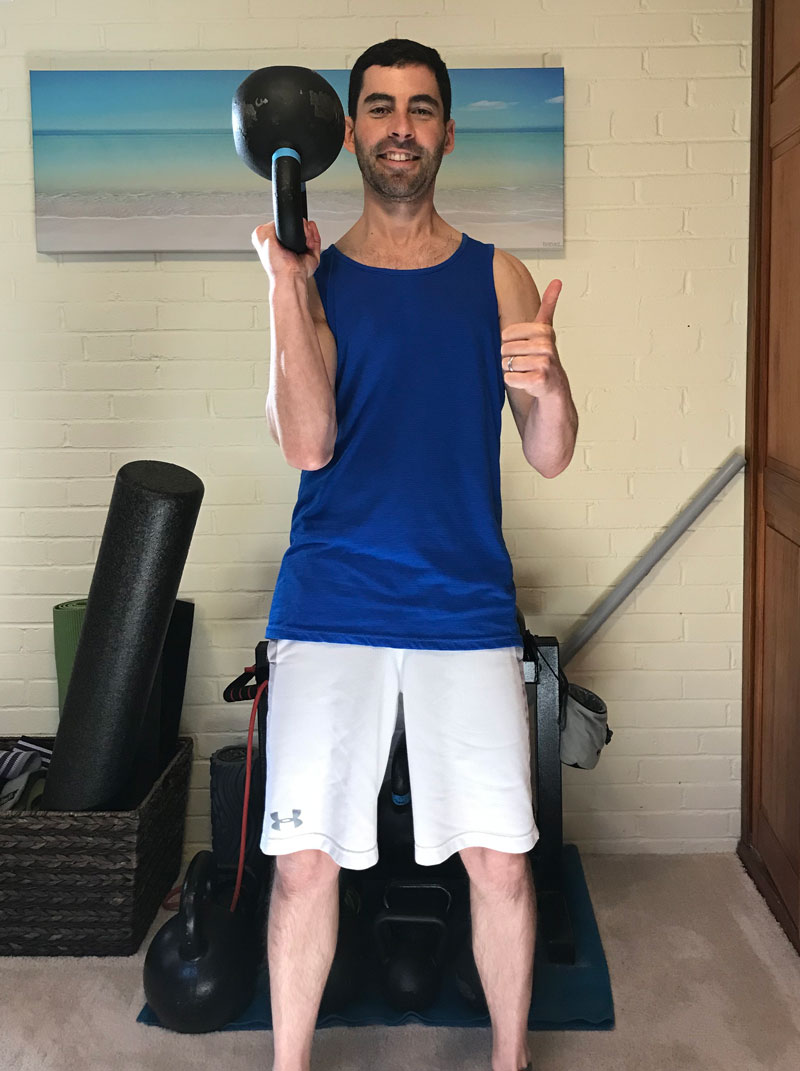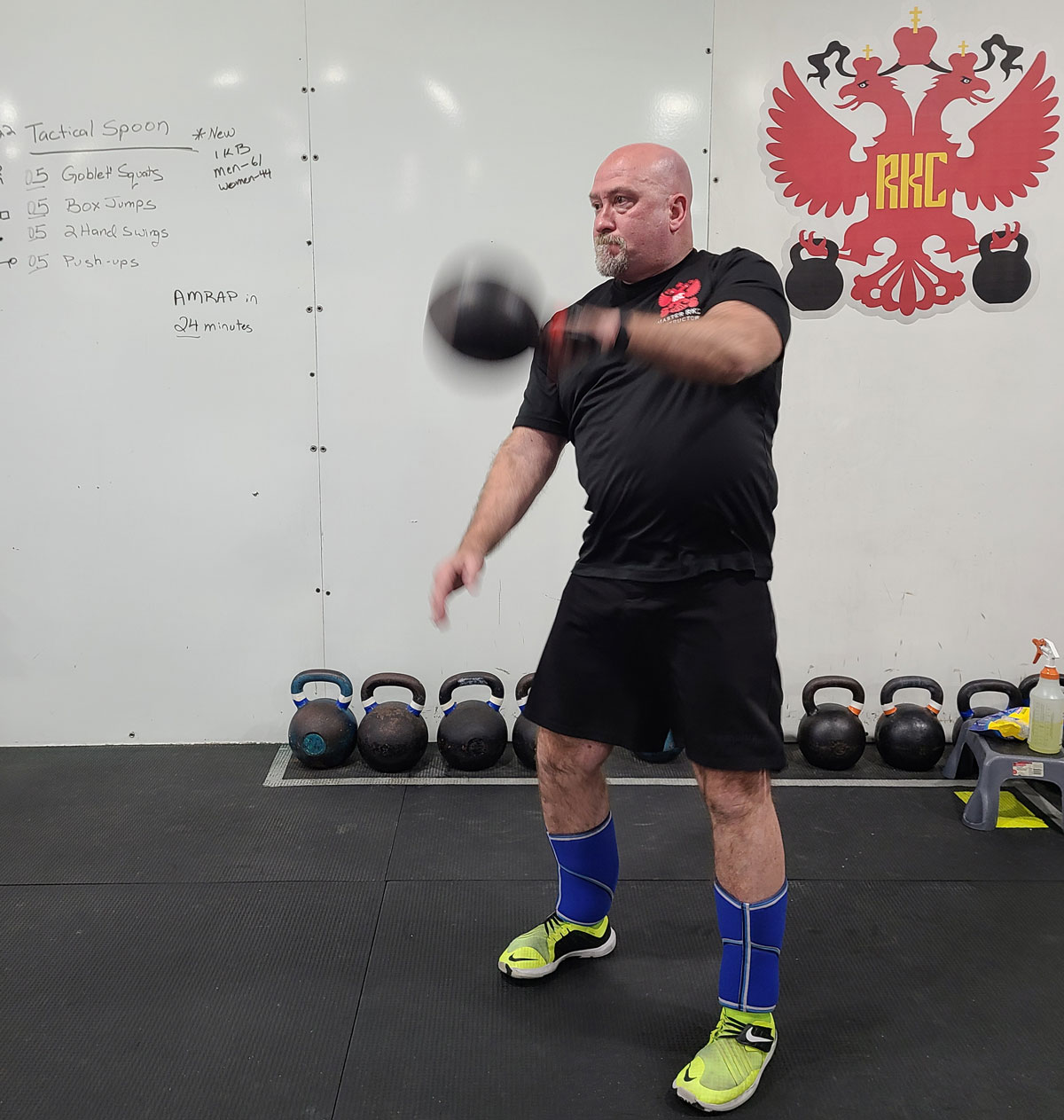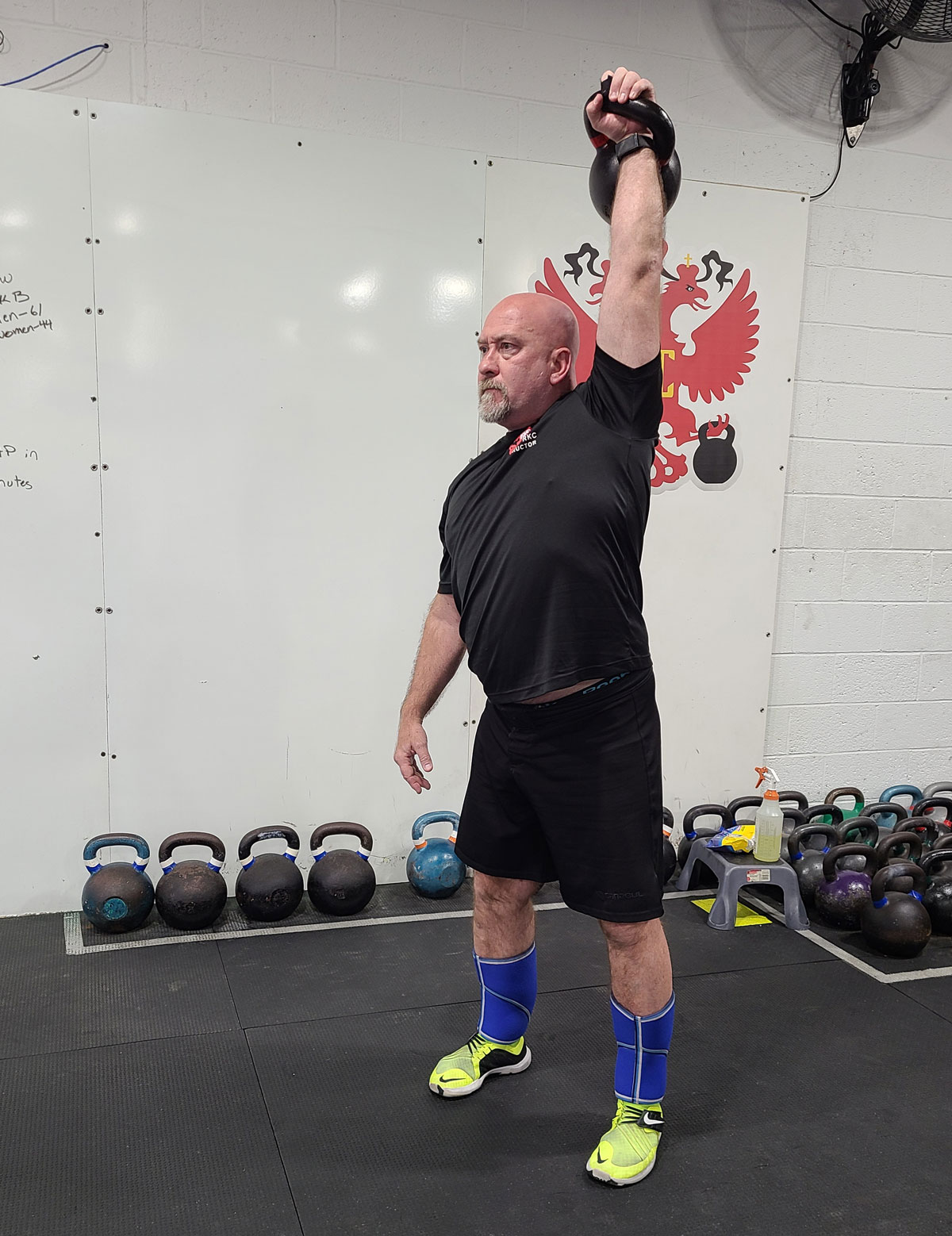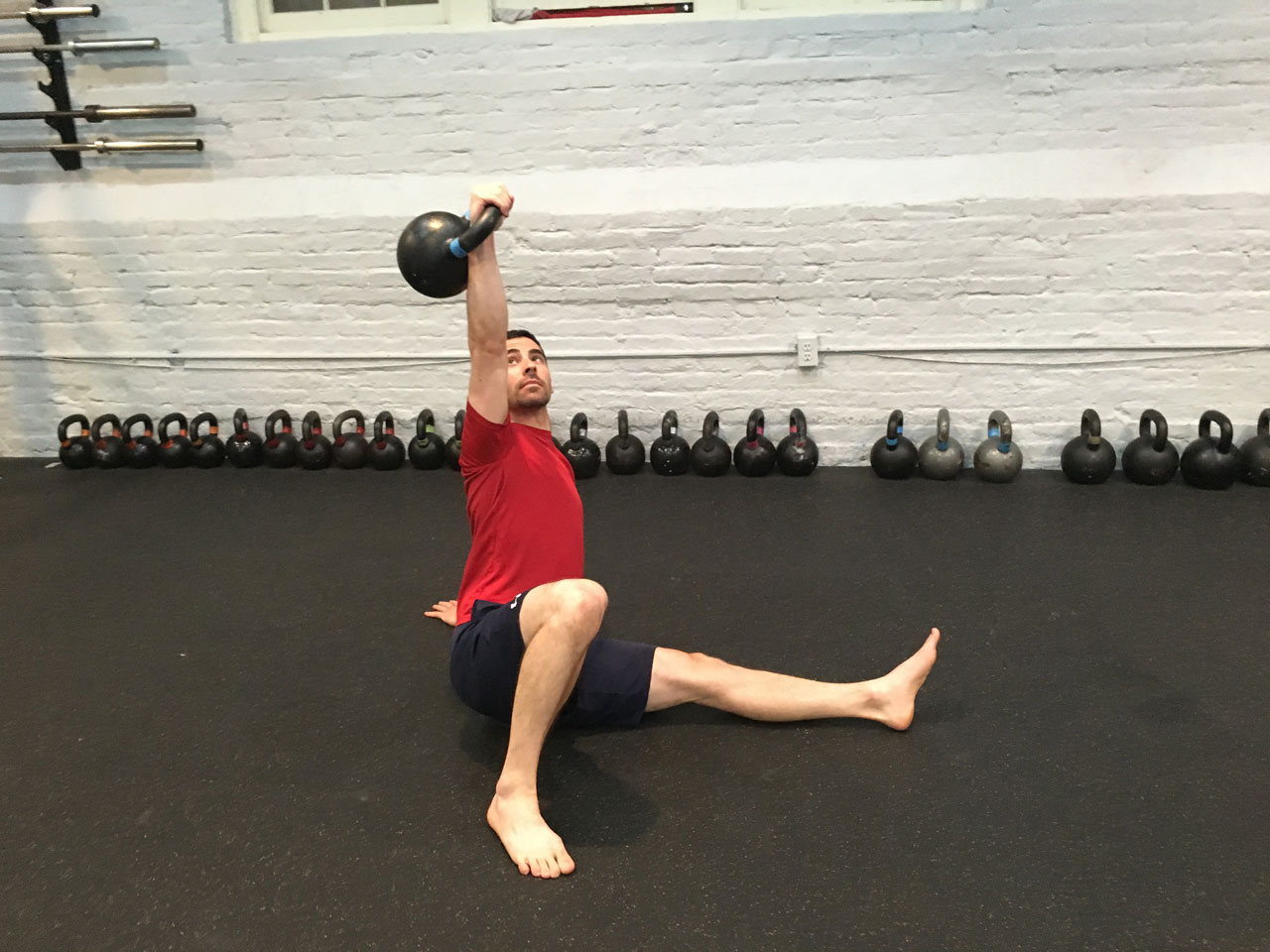
Disclaimer: This is Ryan Jankowitz’s personal shoulder recovery program. What worked for him may not be safe or appropriate for anyone else. If you are experiencing any shoulder pain, see a medical professional for a clear diagnosis and PT program for your injury.
In the Fall of 2021, I started experiencing pain in my left shoulder during presses and Turkish get-ups. I took a month off from practicing those exercises, hoping that rest would be enough to heal my shoulder. But, while the pain decreased, I still couldn’t perform those movements.
Finally, I decided to schedule time with a physical therapist. I was diagnosed with shoulder impingement. The physical therapist scheduled me to come to the office twice a week, plus exercises to do every day at home.
I paid very close attention to the work I was doing with the physical therapist. Soon after, I began to formulate my own program to follow after my course of physical therapy.
Here Are My Five Main Takeaways:
1. Work on Shoulder Blade Retraction
Part of the reason I developed shoulder impingement was because my shoulder blade was not tracking along my ribcage properly. My shoulder blade was “winging”, and I had to strengthen the muscles around my shoulder blade. I could accomplish this by practicing kettlebell rows, farmer’s walks, suitcase carries, and rack carries.
2. Strengthen the Core
I was shocked at how much trouble I had with side planks on my left shoulder. Adding side planks to my training had an immediate positive impact on my shoulder and became a must-have in my program.
3. Improve Shoulder Stability
At physical therapy, we did a lot of shoulder stability work in the tall plank position, and I could tell that this exercise was beneficial. We also practiced lateral moving tall planks and shoulder taps. I decided these side plank variations would be an integral part of my program and would work well in my mobility warm-up.
4. Work on Thoracic Spine Mobility
My physical therapist noted that my ability to rotate from my thoracic spine was quite different on my right side to the left. This may have played a role in how I developed the shoulder impingement. Luckily, the RKC program teaches several exercises and mobility drills which can improve t-spine mobility: Turkish get-ups, windmills, bent presses, and the RKC arm bar. I felt that single kettlebell overhead squats could also improve my shoulder stability.
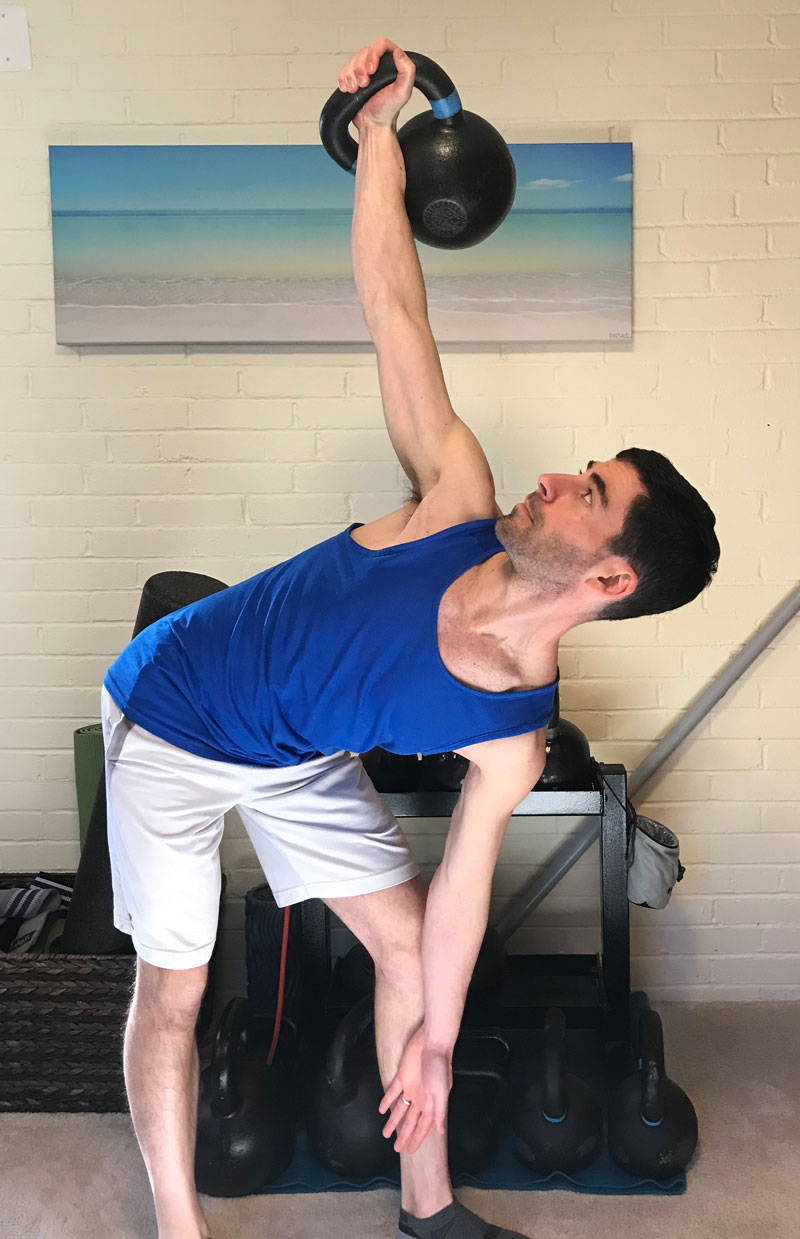
5. Increase Grip Strength with Bottom-Up Kettlebell Exercises
I remember reading that grip strength and shoulder health were related. I noticed that I had trouble doing even light bottom-up kettlebell exercises on my left arm and was determined to fix this! Oddly enough, even though they were difficult, I could do bottom-up presses without pain. So, I decided to include bottom-up presses along with rack carries in my program.
After six weeks of physical therapy, I was pain free and able to practice presses and get-ups with light kettlebells. I was determined to continue my progress by developing my own post-rehab strength program based on what I did in physical therapy and my RKC knowledge.
Here’s the 8-week strength program I created to address my needs and goals:
Day 1:
Mobility warm-up:
Combination of physical therapy and primal movements to activate my core and shoulder. And to raise my heart rate.
Strength Block 1:
Overhead Squat
Kettlebell Row
Plank variation
x 3 sets
Strength Block 2:
Single Leg Deadlift
Bottom-Up Press
Loaded Carry
x 3 sets
Conditioning:
1 Arm Swings
Day 2:
Mobility warm-up:
Combination of physical therapy and primal movements to activate my core and shoulder and get my heart rate up.
Strength Block 1:
Overhead Lunge
Kettlebell Row
Plank variation
x 3 sets
Strength Block 2:
Suitcase Deadlift
Turkish Getup
Loaded Carry
x 3 sets
Conditioning:
1 Arm Swings
Day 3:
Mobility warm-up:
Combination of physical therapy and primal movements to activate my core and shoulder and get my heart rate up.
Strength Block 1:
Overhead Squat
Kettlebell Row
Plank variation
x 3 sets
Strength Block 2:
Single Leg Deadlift
Bottom-Up Press or Getup
Loaded Carry
x 3 sets
Conditioning:
1 Arm Swings
Goals and Progressions
I also created a few milestone goals for myself, so I could recognize when it was time to move up to the next size kettlebell or movement progression.
Overhead Squat Progression: I started with a dowel and built up to 10 reps before moving to a single kettlebell. Once I could do 5 reps/side, I moved up to next kettlebell. Once I could do 5 reps with a 16kg kettlebell, I switched to practicing windmills.
Kettlebell Row: I worked up to 10 reps/set before moving up to the next kettlebell.
Single Leg Deadlift: I worked up to doing 5 reps/leg with 32kg, once I could do that I started practicing with double kettlebells.
Bottom-Up Press: I started with a 10kg kettlebell and gradually built up to 5 reps. Once I could do 5 reps, I moved up to next kettlebell.
Turkish Get-up: My first goal was to comfortably complete 3 reps/side starting with a 16kg kettlebell. Once I could do 3 reps per side, I moved up to the next kettlebell.
Overhead Lunges: I started with 16kg and built up to 5 reps/side. Once I could do 5x per side with a 20kg kettlebell, I switched to practicing the Bent Press.
1 Arm Swings: Start with 16kg and build up to 5 sets x 10R, 10L. Once 100 reps achieved, move up to next bell.
I followed this program for 8 weeks and made substantial progress without experiencing pain. I’ve now moved into a double kettlebell program that I created for myself to bring my skills back to where they need to be for my RKC Level 2 requirements. Ya gotta stay sharp!
This was an interesting learning experience for me. I learned that if I’m in pain, I need to go see a medical professional sooner rather than later. This experience also reinforced the notion that kettlebell training should be considered to be a practice, not just a workout. A practice requires patience—but this will result in developing greater skills. Sometimes it’s important to slow down to go faster.
Stay Strong.
***
Ryan Jankowitz, RKC II, CK-FMS Owner of RJ Kettlebell. Ryan is on a mission helping busy men and women lose weight and gain more self-confidence using kettlebells. He enjoys spreading the RKC message and teaching others. If you’re new to kettlebells or you just need some guidance, download his FREE 5-Day Kettlebell Workout Plan.
